General
5 Essential Steps of Design Thinking for UAE’s Food and Beverage Businesses
Overview
The five essential steps of design thinking for UAE’s food and beverage businesses are crucial:
- Empathizing with the target audience
- Defining core problems
- Ideating solutions
- Prototyping
- Testing ideas
By adhering to these steps, businesses foster creativity and collaboration, which are vital for effectively addressing consumer needs and adapting to the ever-changing market dynamics. This approach ultimately enhances branding and marketing strategies, positioning businesses for success in a competitive landscape.
Introduction
In a world where food preferences are rapidly evolving, the intersection of design thinking and food advertising has never been more crucial. Consumers are increasingly seeking brands that resonate with their values and tastes; thus, understanding the principles of design thinking is essential for businesses in the food and beverage sector.
This article explores the transformative power of:
- Empathy
- Problem definition
- Ideation
- Prototyping
- Testing
All tailored to meet the dynamic needs of today’s consumers. By examining practical strategies for engaging with target audiences and refining brand messaging, organizations can navigate the complexities of modern advertising. This ensures they not only capture attention but also foster lasting connections with their customers.
Understand Design Thinking Principles
Design thinking represents a human-centered approach to innovation, emphasizing the necessity of understanding individuals’ needs and experiences, particularly in relation to evolving dietary habits that influence advertising strategies. The core principles include:
- Empathy: Understanding the emotions and experiences of individuals, especially regarding their changing dietary preferences and the impact of cuisine advertising.
- Define: Clearly articulating the problem based on user insights is crucial for adapting advertising methods to mirror contemporary consumer behaviors.
- Ideate: Generating a diverse array of ideas and solutions that resonate with the target audience’s shifting tastes and preferences, leveraging various media types such as social media, photos, and videos to effectively engage consumers.
- Prototype: Developing tangible representations of concepts to assess their feasibility within the realm of cuisine advertising, including content creation strategies that can be evaluated across different platforms.
- Test: Gathering feedback to refine solutions, ensuring that advertising strategies connect meaningfully with consumers through targeted media planning and purchasing.
These principles foster a mindset that values creativity and collaboration, essential for executing the five critical steps of design thinking, particularly for UAE’s food and beverage businesses facing dynamic challenges.
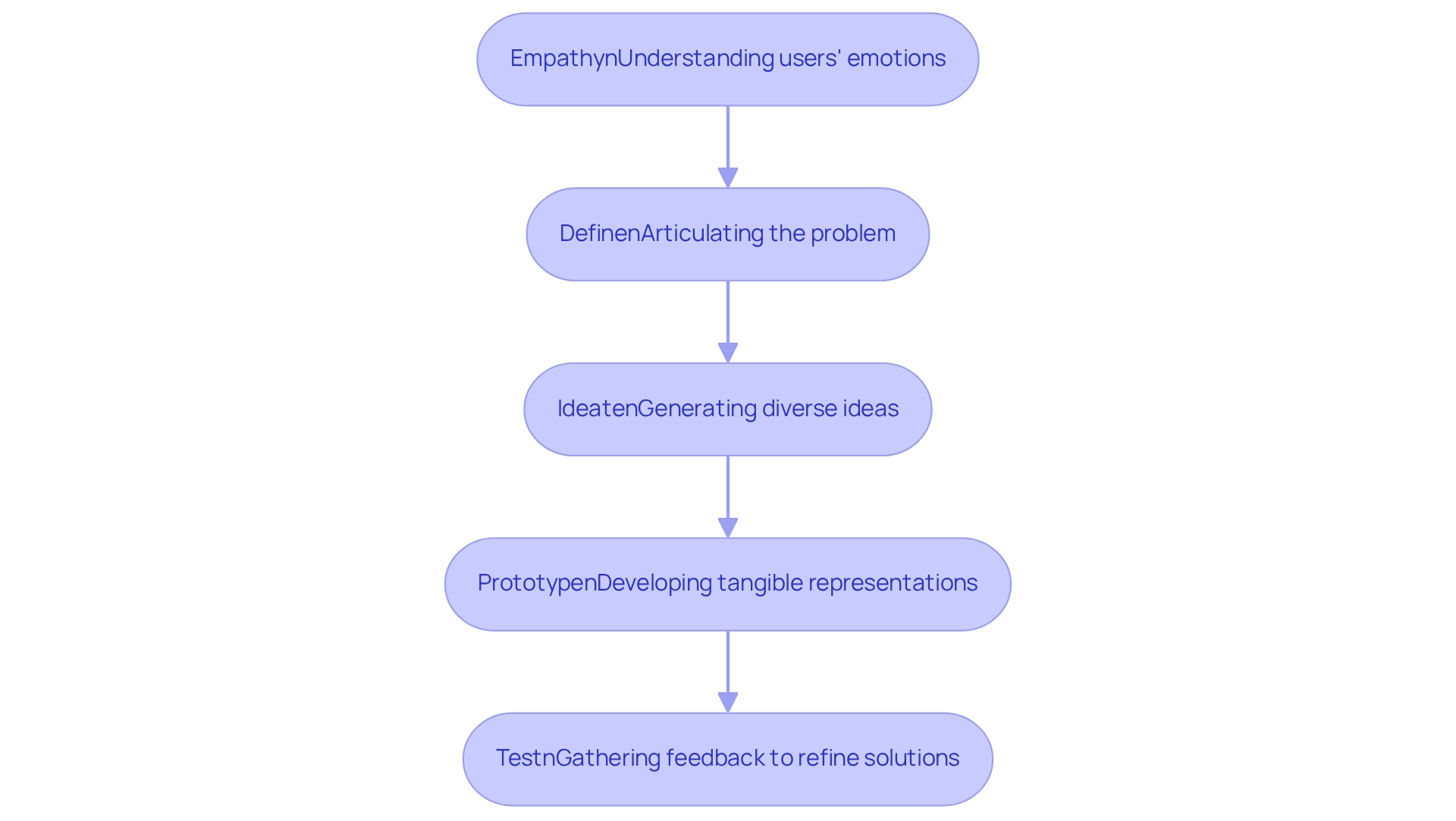
Empathize with Your Target Audience
To effectively empathize with your target audience in the food and beverage sector, follow these essential steps:
-
Conduct Interviews: Engage customers through one-on-one interviews to gather qualitative insights about their experiences and preferences. Research indicates that effective customer interviews can lead to a 300% increase in revenue for brands that understand their consumers’ needs. This direct interaction reveals valuable information about their motivations and expectations.
-
Observe Behavior: Immerse yourself in environments where customers engage with culinary and beverage products. Observing their behaviors and reactions in real-time provides a deeper understanding of their needs and preferences. For instance, a case study from the UAE food industry demonstrated that brands implementing the five essential steps of design thinking by closely monitoring customer interactions were able to tailor their offerings more effectively, resulting in increased customer satisfaction.
-
Create Empathy Maps: Utilize empathy maps to visualize customer insights. These maps capture what customers say, think, feel, and do, allowing you to identify gaps in their experiences and areas for improvement. Tools like Miro or Lucidchart can assist in creating these maps efficiently.
-
Analyze Feedback: Collect and analyze feedback from surveys and social media platforms to identify common themes and sentiments. This data highlights trends in consumer behavior and preferences, guiding your branding strategies. According to industry experts, leveraging social media feedback significantly enhances your understanding of customer sentiment.
By deeply understanding your audience through these methods, you can tailor your offerings to effectively meet their needs and enhance their overall experience. As Michael Jaconi, Founder and CEO of Button, states, “Investors and entrepreneurs are truly tested in the hard times, and it was in those times when I saw the importance of understanding customer needs shine brightest.
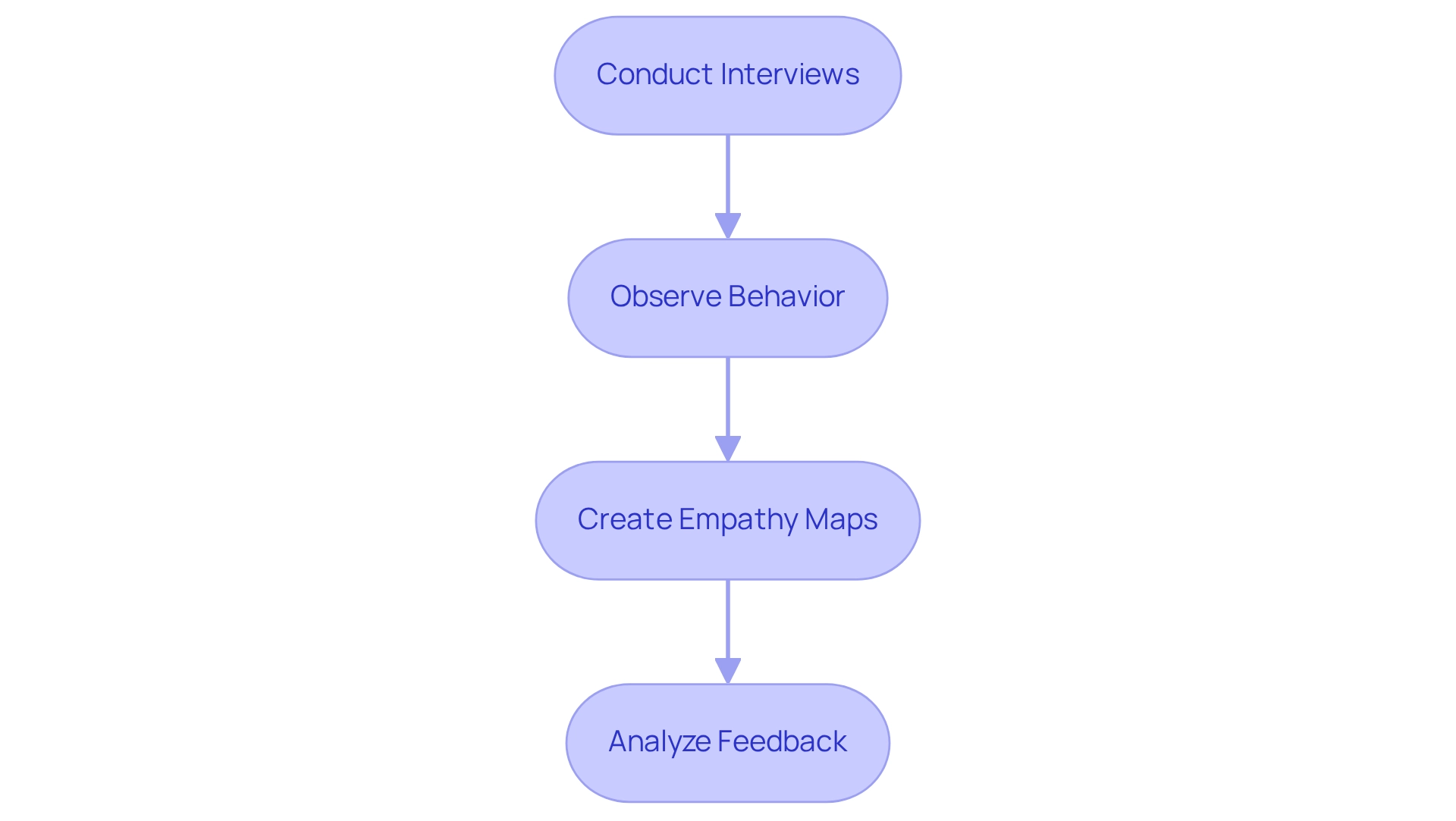
Define the Core Problem Statement
To effectively define your core problem statement, consider the following steps:
- Synthesize Insights: Begin by reviewing insights gathered during the empathy phase. This will assist you in identifying the key challenges encountered by your target audience in the beverage industry, particularly considering changing eating habits that impact consumer preferences.
- Craft a Challenge Statement: Frame your challenge statement using the format ‘How might we [insert challenge] for [target audience]?’ This approach encourages creative thinking and focuses on solutions that resonate with modern consumer behaviors.
- Prioritize Issues: Assess which challenges are most critical to address by analyzing customer feedback and aligning with your business goals. This prioritization guarantees that your efforts focus on the most significant areas, especially in adjusting to new food advertising codes and efficient media planning approaches.
- Validate with Stakeholders: Share your developed issue statement with team members and stakeholders. Effective communication during this collaboration not only ensures alignment but also invites additional insights that can enhance your approach, particularly in the context of media planning and content development.
A clearly articulated issue statement acts as a compass for your ideation process, keeping your team focused and aligned on the objectives. In the competitive environment of the UAE’s food and beverage sector, where businesses frequently find it challenging to recruit skilled designers, applying the 5 essential steps of design thinking for UAE’s food and beverage businesses can greatly improve the efficiency of your branding and marketing approaches. As Chethan KVS aptly stated, “If you choose worthwhile issues, you’ll have a good solution.” For example, WonderEight’s partnership with Quaker Oats illustrates how a strong brand approach, based on a clearly articulated issue, can result in enhanced brand communication and greater consumer loyalty. Moreover, the brand identity enhancement for Castania and the digital initiative for Motorola further demonstrate how tackling fundamental challenges through clearly articulated statements can assist businesses in maneuvering the intricacies of the market more efficiently, particularly considering the new regulations of food advertising.
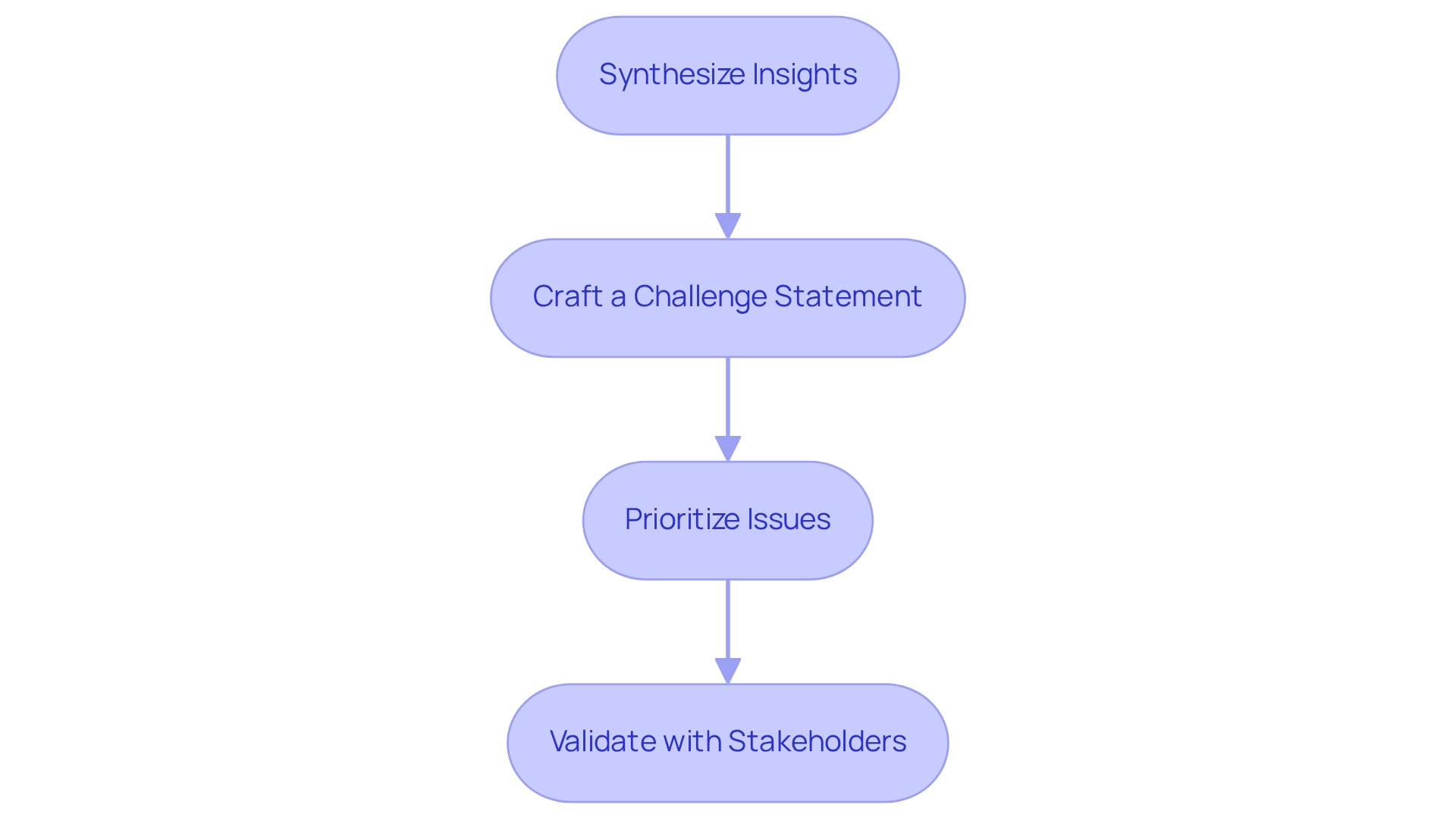
Ideate Solutions for Identified Challenges
To ideate effectively, consider implementing the following techniques:
- Brainstorming Sessions: Facilitate collaborative brainstorming sessions where all ideas are welcomed without judgment. This approach fosters an environment of creativity, allowing diverse perspectives to flourish and leading to innovative solutions. The classic brainstorming meeting concept, initiated by Alex Osborn in 1939, underscores its long-standing significance in creative processes.
- SCAMPER Technique: Employ the SCAMPER method—Substitute, Combine, Adapt, Modify, Put to another use, Eliminate, and Reverse—to examine existing ideas from various angles. This structured approach encourages deeper exploration and can yield fresh insights into product development and branding strategies.
- Mind Mapping: Utilize mind mapping to visually organize ideas and uncover connections between them. This technique not only aids in structuring thoughts but also enhances the team’s ability to see the bigger picture and identify potential opportunities.
- Role-Playing: Incorporate role-playing exercises to simulate real-life scenarios and evaluate how different solutions might perform in practice. This hands-on technique can reveal practical insights and help refine concepts before implementation.
Group brainstorming is particularly beneficial for solving problems through unrestrained discussion, generating a large number of ideas quickly, and incorporating diverse viewpoints. For instance, a company that adopted a new Market Control System (MCS) successfully increased its market share by 125%, demonstrating the tangible benefits of effective ideation techniques.
As Renoir stated, “With best-in-class sales management control systems in place, the company is now fully prepared to meet the challenges of this competitive market.” Fostering a culture of creativity and open-mindedness is essential for generating a wealth of ideas that can support the five essential steps of design thinking for UAE’s food and beverage businesses in driving successful branding and marketing initiatives.
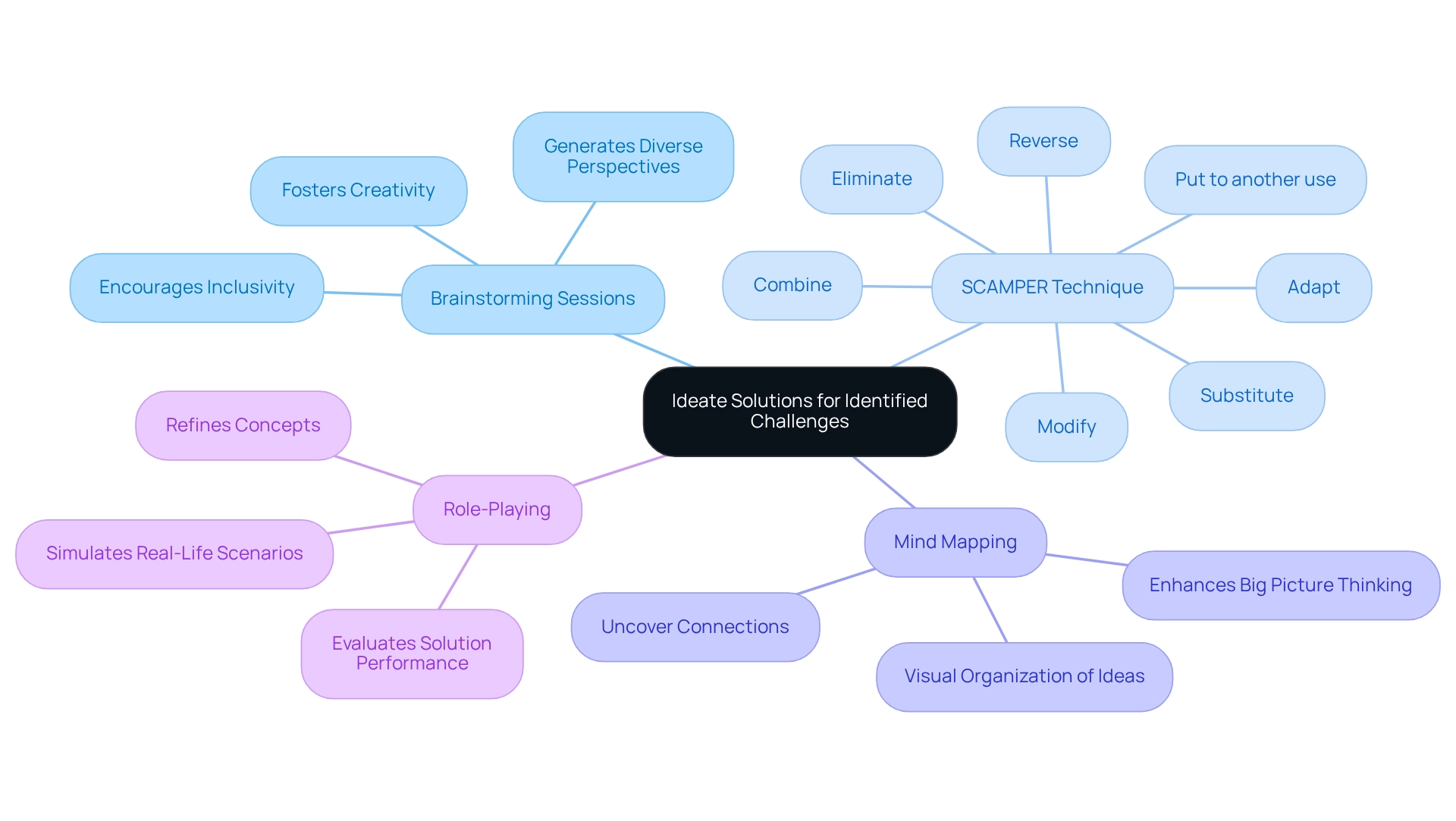
Prototype and Test Your Ideas
To effectively prototype and test your ideas, it is crucial to follow these essential steps:
- Create Low-Fidelity Prototypes: Start with simple, cost-effective prototypes such as sketches, mockups, or digital wireframes. These initial representations allow you to visualize concepts without significant investment. As Ellen Lupton aptly states, “Design is storytelling,” and these prototypes serve as the first chapter in your design narrative.
- Conduct User Testing: Engage your target audience by inviting them to interact with your prototypes. Collecting opinions on their experiences is essential for comprehending needs and preferences. Interestingly, statistics indicate that there are 65 articles and 9 videos on Interface (UI) Design, emphasizing the abundance of resources available to guide effective testing practices.
- Iterate Based on Feedback: Analyze the feedback collected to pinpoint areas for improvement. This iterative process is essential for enhancing your prototypes and ensuring they align with audience expectations. As Shawn Borsky emphasizes, experience is ultimately defined by how individuals recall it, making this step essential for creating lasting impressions.
- Develop High-Fidelity Prototypes: After refining your ideas, create more polished prototypes that closely resemble the final product. High-fidelity prototypes offer a realistic depiction, facilitating the assessment of the design.
- Test Again: Conduct additional testing with your high-fidelity prototypes to confirm they meet audience expectations and effectively address the identified problem. A pertinent case study is the comprehensive campaign for Quaker Oats, where effective prototyping and consumer testing led to a stronger brand connection with customers and enhanced market performance.
This iterative method, aligned with the 5 essential steps of design thinking for UAE’s food and beverage businesses, not only promotes innovation but also improves user-friendliness, ultimately resulting in effective branding solutions in the competitive beverage industry. Current trends in user testing for food and beverage product development indicate that effective prototype testing can significantly increase the likelihood of product success, underscoring the importance of this process in product development.
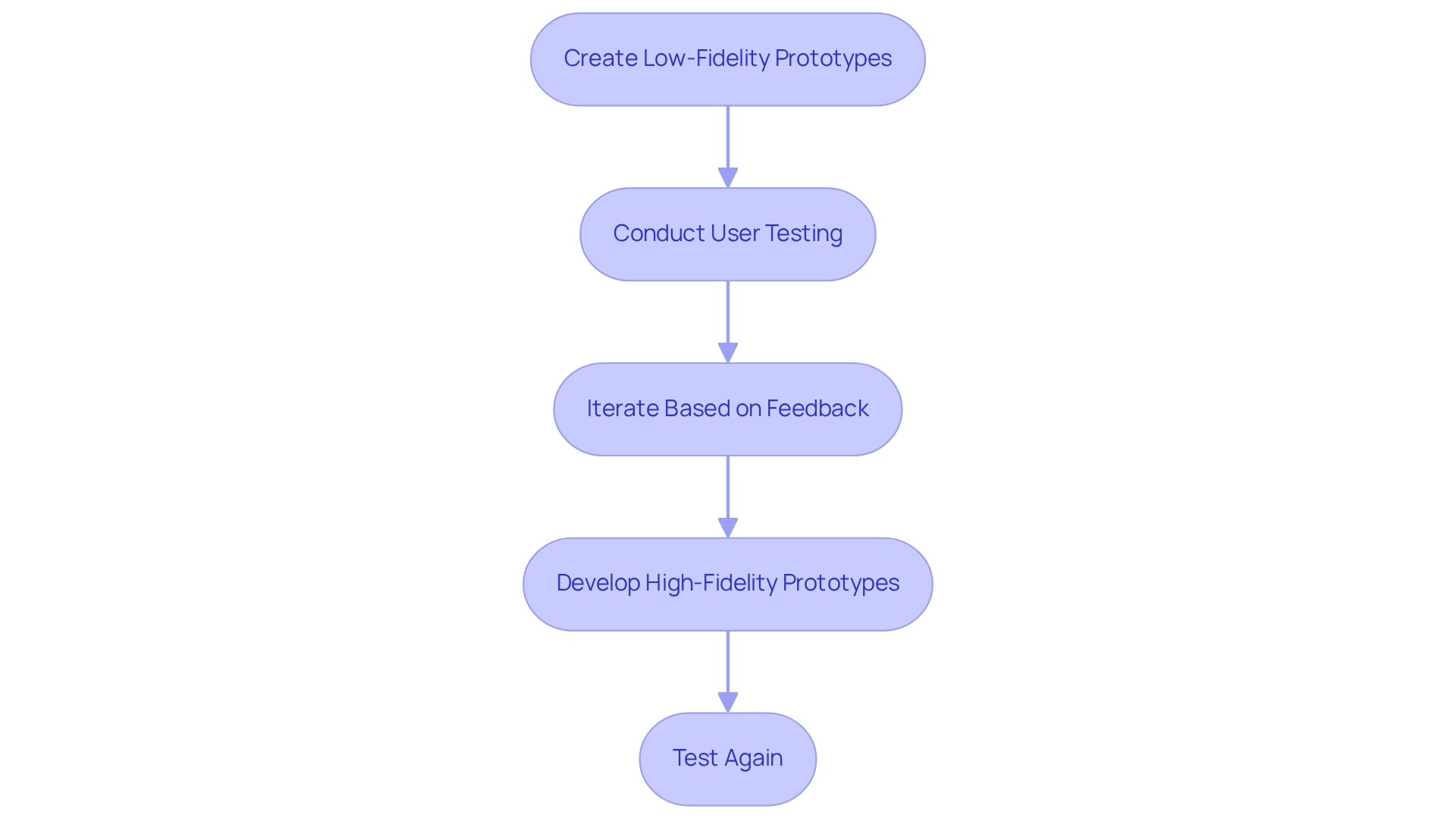
Conclusion
The principles of design thinking serve as a powerful framework for food and beverage brands aiming to connect with their evolving consumer base. By emphasizing empathy, businesses gain invaluable insights into their customers’ needs and preferences, which allows for more targeted advertising strategies. Defining core problems based on these insights ensures that efforts are directed toward addressing the most pressing challenges faced by consumers today.
Through ideation, brands can explore a myriad of creative solutions that resonate with their audience. Techniques such as brainstorming, SCAMPER, and role-playing cultivate an environment ripe for innovation, enabling teams to develop ideas that are both relevant and engaging. Prototyping and testing these concepts with real users further refine their alignment with consumer expectations, ultimately enhancing the overall experience.
In an increasingly competitive market, particularly within the UAE’s food and beverage sector, leveraging design thinking is not merely beneficial—it is essential. By adopting this human-centered approach, brands can navigate the complexities of modern advertising, create meaningful connections, and drive loyalty among consumers. As food preferences continue to evolve, those who embrace these principles will not only capture attention but also foster lasting relationships with their customers, ensuring sustained success in the ever-changing landscape of food advertising.
Frequently Asked Questions
What is design thinking and its significance in advertising?
Design thinking is a human-centered approach to innovation that focuses on understanding individuals’ needs and experiences, particularly in relation to changing dietary habits that influence advertising strategies.
What are the core principles of design thinking?
The core principles of design thinking include: 1. Empathy: Understanding individuals’ emotions and experiences. 2. Define: Clearly articulating the problem based on user insights. 3. Ideate: Generating diverse ideas and solutions that resonate with the target audience. 4. Prototype: Developing tangible representations of concepts to assess feasibility. 5. Test: Gathering feedback to refine solutions and ensure meaningful connections with consumers.
How does empathy play a role in design thinking for food and beverage businesses?
Empathy allows businesses to understand customer emotions and experiences, which is crucial for adapting advertising methods to contemporary consumer behaviors.
What steps can be taken to empathize with the target audience in the food and beverage sector?
Essential steps include: 1. Conducting interviews to gather qualitative insights. 2. Observing customer behavior in real-time. 3. Creating empathy maps to visualize customer insights. 4. Analyzing feedback from surveys and social media to identify trends.
How can conducting customer interviews benefit brands?
Effective customer interviews can lead to a significant increase in revenue for brands that understand their consumers’ needs, revealing valuable information about their motivations and expectations.
What is the purpose of creating empathy maps?
Empathy maps help visualize customer insights by capturing what customers say, think, feel, and do, allowing businesses to identify gaps in their experiences and areas for improvement.
Why is analyzing feedback important in understanding customer sentiment?
Analyzing feedback from surveys and social media highlights common themes and trends in consumer behavior, guiding branding strategies and enhancing understanding of customer sentiment.



